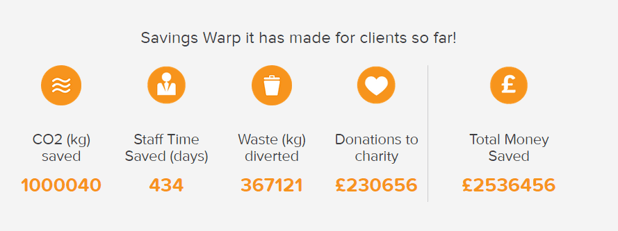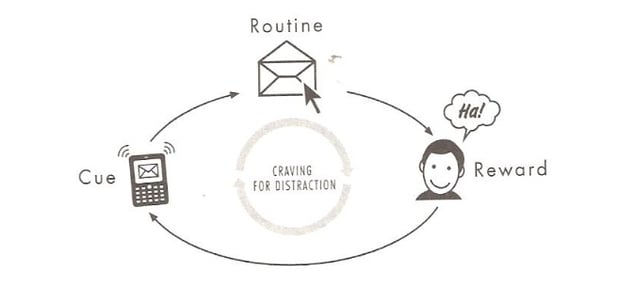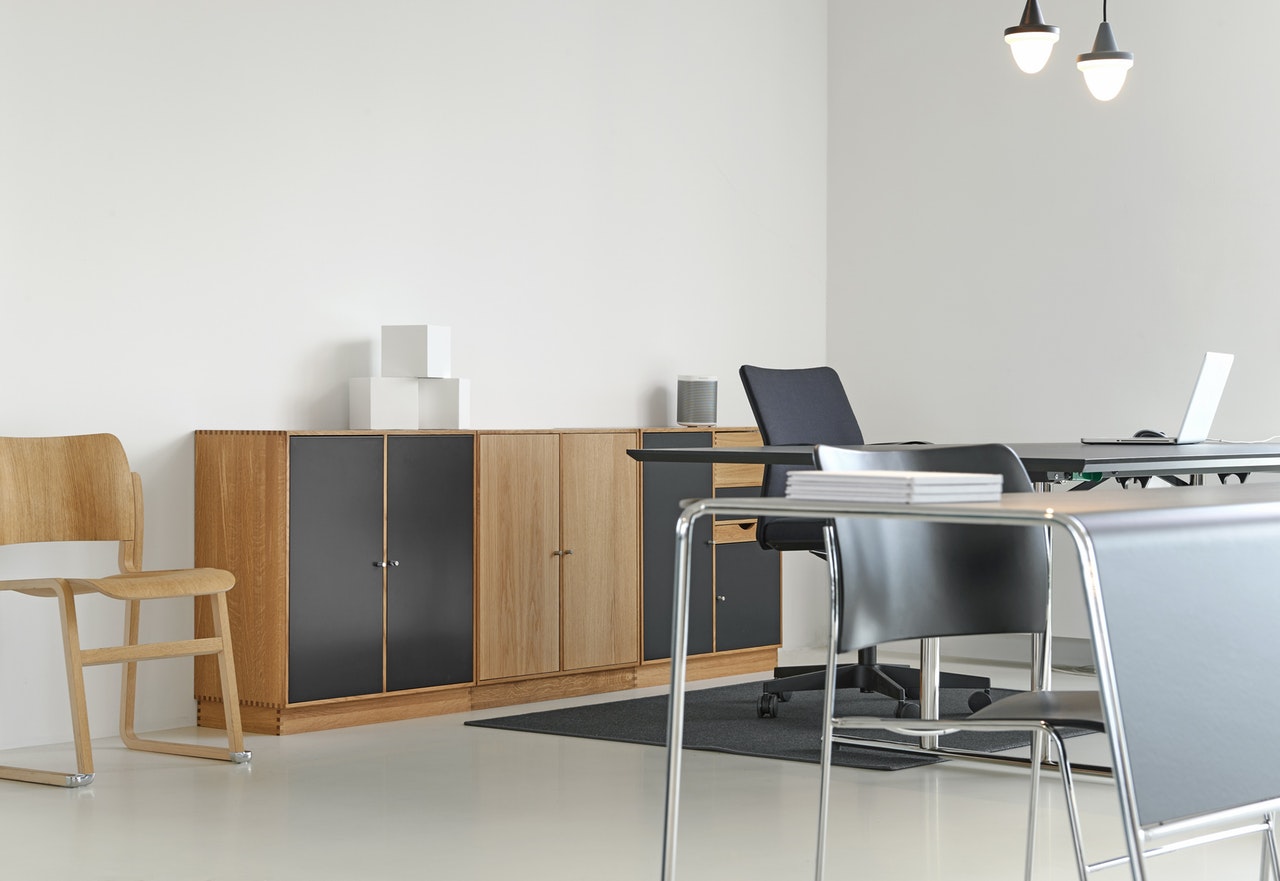Welcome to this latest blog post, where we take a look at the bizarre or unexpected things that can drive reuse or surpls assets furniture and equipment in an organisation.
It’s important to note that these are random benefits we never thought of before we set off on our mission of making reuse mainstream.
They are anecdotes have been fed back to us from customers. It is also important to note that only some of these things are measurable.
- Avoiding the Purchase Order
|
One of the main things that we hear from our members, is that they like to use the reuse system because they don't need to fill out purchase orders. If you've ever worked in a large organisation, you'll know that a Purchase Order can be quite laborious to produce. In general, the process for a purchase order is this: go on the e-procurement system, catalogue or online system, identify an item to purchase and fill in a form to buy that item, this generates some sort of requisition, this goes to procurement, they set up and process the requisition, this puts in the Purchase Order for the product or business. |
|
Once the product is ordered, is turns up at a specified address. Later, the product turns up either to a central drop-off point, or to the person who ordered it. The person receives an invoice with the Purchase Order reference. That invoice then needs to get signed off by at least one person, often more. That invoice can end up sitting in people's in-trays waiting to get signed, while the supplier phones for the payment of the invoice- often many times over many months. (Our record is about 8 months for payment from recipt of goods). It’s a looooong process. A reuse system avoids this. How is our reuse system different? |
|
By putting in a claim on Warp It, there's no purchase order, there's no time wasted dealing with invoices. These savings of time, energy and admin work are some of the biggest drivers for Warp It. Staff become accustomed to looking on the system for procuring items, rather than buying new. 2. It simplifies delivery |
|
This one comes via John Bailey, the Sustainability Manager at the University of London. John says that when new products are delivered to a large organisation, they're often delivered centrally, and they come wrapped in all sorts of packaging. When you acquire a reused item, it comes from another internal spot, direct to the recipient, exactly where you are, and can often be quicker than a delivery from a supplier. You can see John talking about this benefit and others here. |
|
We sometimes see our users receive deliveries secondhand, before they can get deliveries new. Of course, they come with much less packaging, no pallets and no bubble wrap. 3. Improved internal communication |
|
It’s not really quantifiable, but what we’ve learned is that large organisations exist within silos, so everybody's existing with their own silo, working towards their own strategy, without collaborating much, or talking to other departments. |
|
When you implement a reuse system, you're creating a communication process whereby staff are communicating about surplus assets across the organisation, and they're meeting new people via the reuse system. |
|
We have one lovely anecdotal story from a new member of staff at the Maker Space at UCL in London. She told us that when she had just joined the organisation, and was looking for things on the Warp It system there, she enjoyed meeting people through the reuse system. When people went and got their stuff, it was a really nice way to meet people in the organisation.
4. Warp It: The great connector? |
|
We would love to be able to develop some sort of collaboration metric, whereby we could measure the introductions that Warp It has made, and the good that might come from the introductions. How well do you know everyone in your organisation? The people who have been there the longest have the best network in an organisation, and that's how they can get things done much easier than the new starters. They know who does what, they've already got rapport with those people and so it makes the collaborations easier. |
|
5. High volume, low value |
|
Another benefit on a strategic level, one that might be a bit of a surprise, is that once you start reusing surplus assets, and track the volume, senior management start to realise the value of those high volume, low value assets. When we say low value, we are saying under £60-£70. When you start trading on Warp It, which tracks the value of the trades, if you save £50,000 in the first six months, just by trading furniture and stationery, it makes the senior management sit up and take notice. This is especially prevalent in procurement, where you only really track assets over a certain value, and you realise what the value of these surplus assets are out in the field. The nice benefit is that when senior management realises, they admit they've been under-resourcing the activity of reuse and go about putting this right.
|
|
A side benefit is that as the lead on reuse in the organisation, you can make a business case for more resources to maximise and supercharge reuse. For example, in Sunderland, when the city council saved £50,000 in the first couple of months, they realised "Wow, it's more than we thought. We need to invest in a member of staff to mainstream this, and make it really impactful." |
|
In Glasgow for example, when a number of the big players in the city saw how well they were doing internally, they got together and said "look, let's put some resources into this, and we can really maximise trades between the organisations." They've actually invested in some joint storage, and a joint function whereby there's a person who manages that store, and delivers surplus assets around the city. |
|
These activities, these extra resources put into reuse, would have never happened without the tracking of the value of the reuse that was going on at a departmental and organisational level. By tracking those values, you can actually build your team, or build the resources in your team, or even build the resources that are required to lead and maximise reuse. Who knows what will happen next? Once you start doing reuse and prove that the model works, you can then move onto doing repair, or refurbishment, and further prove that model. You're moving up the circular economy and the waste hierarchy. At that point, you’re actually reducing waste. 6. It becomes habit |
|
Another surprising benefit of reuse, is that reuse sometimes becomes habit, which is wonderful for us. Reuse, although it has sustainability benefits, holds other major benefits too, like saving procurement and waste disposal costs. People are used to eBay, people are used to Gumtree and Freecycle, so reuse is already well known, just under different names. When people do it, they don't necessarily relate it to having sustainability behaviours. |
|
When you have a good couple of wins with someone who isn't really into sustainability. through the use the reuse system,this can actually act convert their actions into habits. This habit that someone develops then leads onto other good behaviours. For example, if someone sets themselves the target that they are going to stop drinking alcohol as a New Year's Resolution, that might then lead into another habit of "I'm going to go for a run every morning", or "I'm going to start eating salads for dinner", or "I'm going to drop carbs". It's that first habit that they get right that then unlocks other habits down the chain. |
|
Reuse can be a major sustainability, and gateway habit, for other sustainability behaviours, and an organisational change. We see this on the system, whereby you know some of the people who use our service might be considered frugal with their budget spend, and so they start using Warp It, and start reusing things. Then, Warp It produces this sustainability concept, and then they start turning lights off, and doing other money saving activities which all link with sustainability, and that leads on to other things. It’s very easy to see the jump from reuse, to turning lights out, to recycling your bottles, and then even more sustainable behaviours, like walking and cycling to work. The habit loop
What other benefits does reuse bring? In this article, we’ve covered loads of important benefits of reuse, such as connecting people together, reducing admin work, improving internal communication, developing good habits and making senior management notice the change in behaviour through robust results. Ultimately, reuse is a huge saver of time, money, energy and the environment. It saves time on delivery, procurement and admin work. It saves money through not purchasing assets you already own. It saves human energy through reduced double-handling and fewer people need to be involved in a swap. It saves the environment by stopping useful assets from going in the skip, and stopping new products from being made and purchased, when they are not needed. We hope you’ve enjoyed this blog. If you’d like to learn more about the benefits of reuse why not attend one of our webinars?
Postscript! Bonus reason number 7! I have just heard of another great reason to reuse from one of our customers. I was talking to Luke Champion, Sustainability Manager at 2gether NHS Trust. He said |











